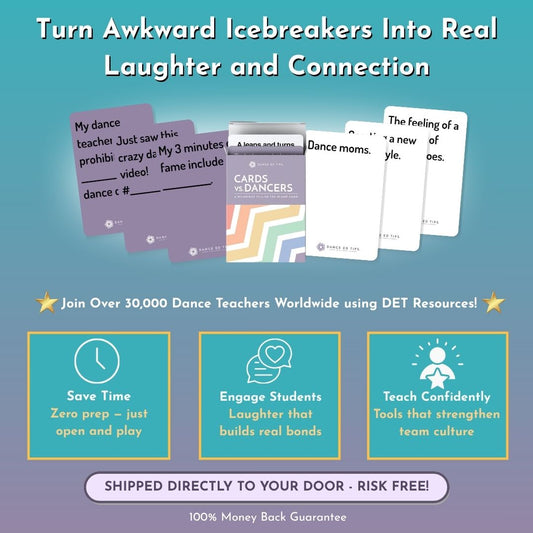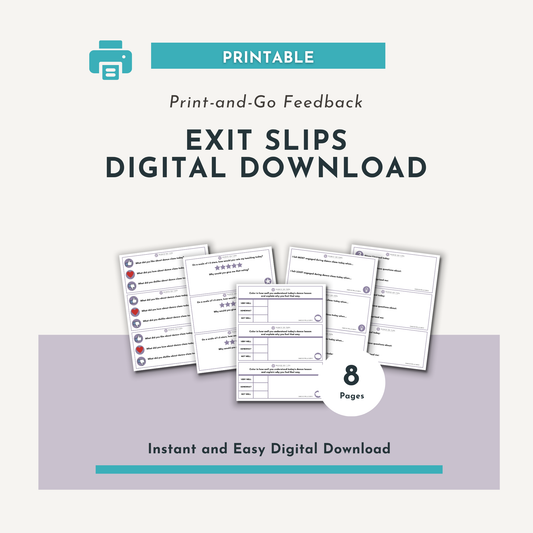By: Alexis Robbins
Click here to see my Dance ED Tip in action!
Dance Ed Tips video - Alexis Robbins
Do you have the music in you? Learn all about musicality in music theory and how it relates to dancers and using their voices!
And now for the fun stuff, here are three specific exercises that you can do on your own or with your students to work on musicality. These are derived from my experiences as a tap dancer, student, choreographer, and educator, but they can be applied to all genres of movement and dance.
Singing a song you know well, for kids I usually assign nursery rhymes, and only dance to the lyrics/melody.
Once you feel comfortable doing that, and can stay in time while doing so, you can move on to filling in the empty spaces and playing outside the melody.
- Example 1: My go to with kids (and adults!) is to start with “Mary Had a Little Lamb”. It’s great because the melody has space at the end of almost every phrase and I’ve never met anyone that doesn’t know the song. I ask them to sing the song out loud and dance only to the words and nothing else. This can be done with improvisation, a specific step, or a series of steps in any genre. I use this most often with tap dance improvisation, as singing a song you know and only dancing to the lyrics is incredibly helpful if improvisation seems intimidating or if you want to break away from a habit in your improvisation. Once they are able to make it through the whole song and hit every note of the melody (or every syllable in the lyrics), I ask them to think of a different song but keep the title to themselves. Then everyone else in class has to guess what they are playing, a super fun game for kids! To put this in the context of other dance forms, this would be a great exercise to do with specific movements such as tendues, grapevines, anything that moves across the floor, any improvisation, and so much more. There are truly no limits.
Once you or your students feel comfortable moving and singing simultaneously to just the melody or lyrics, you can move onto filling in the empty spaces with movements or sounds as well. This is a more advanced exercise, as the idea is that you’re still singing the song as is, but dancing on, off, and around the melody. If you can do this while staying in time to a nursery rhyme or other short songs, start to branch out to longer tunes.
This can be done with ANY piece of music! Nursery rhymes are just my go to when starting out, but when working on this for myself I try to work with jazz standards, sometimes specifically focusing on one instruments’ solo, or hip-hop, R&B, or rap music.
Moving through subdivisions with a specific step or improvisation.
Intellectually understanding the subdivisions that make up the rhythm tree is one thing, but physically being able to transition smoothly from one to the next is another challenge!
For this exercise I HIGHLY suggest using a metronome (I love the Pro Metronome app but there are several other reputable ones and/or you can get pretty much any tempo on YouTube). Why use a metronome? It always tells the truth! When nerves, excitement, or a challenging step have you speeding up or slowing down unintentionally, the metronome will let you know. The metronome is the ultimate truth keeper and for that reason, if you aren’t dancing to music but you want to stay honest about your timing, use a metronome.
- Start with a slow tempo in 4/4 time and pick an easy step, for example, toe heel, shuffle, step touch, or arm reaches, and then set the specific length of time you’ll spend in each subdivision and go through them all chronologically. For example, I could decide I’m going to do 2 counts of 8 of quarter notes, eighth notes, triplets, and sixteenth notes, all while doing kick ball change the entire time. Or I could decide to do an entire 32 bar chorus of each subdivision while doing cramp rolls the entire time. Again, this can be applied to any genre of moving and you can truly pick any step or series of steps. It’s a great way to drill a challenging step over and over and feel how it changes in your body as it gets faster.
This exercise is great for improvisation as well, especially because if the movement is improvised then all your brain has to focus on is timing and transitioning through the subdivisions. This could be accomplished in the center, across the floor, and could even be a game where partners trade with each other. As always, there is no limit as to how creative you can get with this. Need a challenge? Set the metronome to an odd meter such as 5/4 time and mess with the order of the subdivisions, for example, eighth notes, sixteenth notes, triplets, and then quarter notes.
Counting, singing, or speaking out loud while dancing through an entire phrase that repeats on each side.
*As someone who regularly asks students to count out loud, I know that this can be a tough ask.
Speaking, singing, or counting out loud in a dance class can feel intimidating, but just like anything in life, the more you do it the easier it gets. I firmly believe that dancers need to use their voices more, and therefore this is a simple way to work towards that AND strengthen their musicality. I’m also a firm believer of “if you can say it you can do it”. If you can say an entire step out loud in time, then you are significantly more likely to be able to dance it in time and remember it. This will strengthen your mind-body connection!
- Create a short phrase, maybe just 2-4 bars or 1-2 counts of 8, that can be easily repeated on both sides. Really memorize the phrase.
- From there, be as playful as possible while using your voice to count and dancing the phrase. Try counting the quarter notes out loud the whole time, then eighth notes, then sixteenth notes. Try counting only to 4, then try counting to 8, then try only counting to 2. (Is the phrase an odd meter? If the phrase is in 5/4 time, for example, you can try counting to 5 the whole time, then try counting to 3 and 2 to break it up, then try counting to 10). Get creative, there are no limits here.
- Can you sing a song and dance the phrase? If the phrase is 4 bars or 2 counts of 8, find something to sing that’s the same length such as “Mary Had a Little Lamb” (whoops there it is again!), and sing and dance at the same time. Again, no limits, use any song! Make up a song!
- Advanced exercise: can you dance the choreography and stay in time while just speaking about anything or telling a story that doesn’t have musical phrasing? Can you dance the phrase while saying your name, age, and favorite flavor of ice cream? Can you have a conversation with someone while dancing the phrase? This one is extra tough, but an incredibly fun (and possibly funny) challenge none-the-less.
**I would like to credit and thank all of my teachers and inspirations whom have influenced who I am as a dancer, musician, and teacher: Sean Fielder, Hillary-Marie Michael, Lynn Schwab, Anita Feldman, Derick Grant, Dormeshia, and Michelle Dorrance.

Alexis Robbins, a native of Wakefield, RI, and an alumna of the Boston Tap Company under the direction of Sean Fielder, graduated Magna Cum Laude from Hofstra University with a B.A. in Dance and B.S. in Exercise Science. Currently based in New Haven, CT, Robbins is a choreographer, teaching artist, performer, musical collaborator, and improviser. She has taught as an adjunct professor at Hofstra University and at several studios and guest workshops throughout New England, New York, Georgia, and Montana. For the past two years, Robbins has been offering weekly, affordable drop in adult tap classes, as well as jams with live music, for beginner and intermediate dancers, which has gained a wide range of attendance from the New Haven community. She also has teaching affiliations with Neighborhood Music School and the Hartford Dance Collective. Robbins has performed as a soloist at the Ely Center for Contemporary Art, the Friday Pop Up Series on the New Haven Green by the Proprietors of the Green, events by the New Haven Jazz Underground, and with acclaimed artists such as Thabisa. She has been awarded the Artist Workforce Initiative Sponsorship from the New Haven Arts Council and the CT Office of the Arts for her community tap jams with live music, and commissions from Artspace New Haven (City Wide Open Studios 2019) and the International Festival of Arts and Ideas (2020). She hopes to continue to share her passion for dance and music with communities in Connecticut and beyond.





